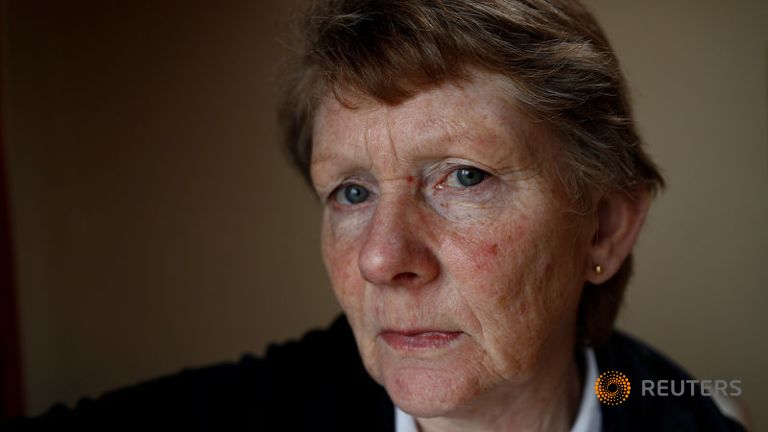Bill Donohue
To the media in Ireland and England, and to some outlets in the United States, Catherine Corless is an Irish hero, a brave woman who uncovered a “mass grave” outside a Mother and Baby Home in Tuam, Ireland. She has been lavishly praised for her painstaking research, making her the most celebrated historian in Ireland today. But before she is canonized St. Catherine of Tuam by her faithful fans, it behooves us to examine her bona fides, and her story.
The first myth concerns her expertise. Contrary to what virtually all news reports have said, Corless is not a historian: she not only does not have a Ph.D. in history, she doesn’t have an undergraduate degree. She is a typist. Her part-time course on historical research may impress some, but to those who know better, a high school equivalency diploma carries more weight.
This does not mean she is dumb—many secretaries are brighter than the professors they serve. Nor does this disqualify her from making a contribution to historical events. But she is no historian.
It was in 2014 when Corless first received media attention about her alleged discovery of a “mass grave.” At that time she was referred to by most media outlets as a “local historian.” That’s a new one on me.
I have a Ph.D. in sociology. No one has ever called me a “local sociologist.” For that matter, I have never heard of a “local biologist” or a “local mathematician.” Moreover, I have worked with many historians, and none has ever called himself a “local,” “regional,” or “national” historian. He’s just a historian, by virtue of his credentials.
Corless has no credentials, yet that hasn’t stopped the media from recently inflating her status again. To wit: She went from being a “local historian” in 2014 to being a full-blown “historian” in 2017. The following media outlets now call her a “historian”: Daily Mirror, Irish Daily Mail, Irish Independent, Irish Times, Newstalk and The Journal. In the United States, Irish Central and Irish Voice have followed suit.
Those who think I am being too harsh should consider what happened when Corless tried to obtain information from the Galway County Council to facilitate her research. She was told to take a hike—she was denied access because she lacked a university degree.
Corless initially impressed even me when I learned that she wrote an article published in 2012 titled, “The Home.” It appeared in the Journal of the Old Tuam Society.
Sounds impressive. In the United States, journal articles are typically published by a noted academic publisher, and all submissions are vetted by “referees,” specialists who have expertise in the area.
The publisher of the Corless article is the Old Tuam Society. It publishes once a year, and makes its articles available in local stores in the Galway area. The Society is run by volunteers. Quaint, but not exactly a reliable source of scholarship.
Talking about scholarship, not only are there no referees at the “journal” who must approve submitted articles, they obviously have no editors on staff at the Old Tuam Society.
For example, on the inside cover of the Corless article, “The Home,” it spells “Committee” “Commitee”: Committee member Caroline Canny is listed as the “Secrtary” (yet David Collins was accurately described as the “Vice Secretary”); and Anne Creaven is listed as the “Tresurer.”
Now none of this would matter much if Corless were just another curious amateur digging around for local news. But she is more than that: She has been elevated to near saintly status by an obliging media on both sides of the Atlantic. Her claim to fame—the nuns made a “mass grave” for children in their care—has never been proven.
The 2012 article Corless wrote makes no mention of a “mass grave.” When I debated her on Irish radio, I asked her when she came to that conclusion. She said it was in 2013. Fine. So I asked her where she published her extraordinary findings. She never did. I then asked her why she took the time to publish her first article—which didn’t capture any headlines—but never got around to publishing her big “finding” about a mass grave. She brushed me off.
It is worth noting that when Corless made her “mass grave” accusation in 2014, Ireland’s Minister for Education said her account was “simply not true.” The local police added that “there is no confirmation from any source that there are between 750 and 800 bodies present.” And to this day, Irish government reports on this subject have made no such claim.
On May 25, 2014, Corless told Alison O’Reilly of the Irish Mail that she was “certain there are 796 children in the mass grave.” That was the beginning of the hoax.
Now here is something that the media will never ask her: In an interview posted on YouTube on June 26, 2014, Corless said she was told by locals from Tuam that before the Home was knocked down in the 1970s, there was a graveyard outside the Home, one with “tiny markers there.” There were “bits of stones left to indicate graves.” The area subsequently evolved into “an absolute wilderness.”
Those “tiny markers” suggest that this was a cillin graveyard, or a graveyard for children. Click here to see what one looks like.
A “mass grave” is not dotted with “tiny markers” or “bits of stones.” Even a “local historian” with no credentials should be able to figure that one out.







